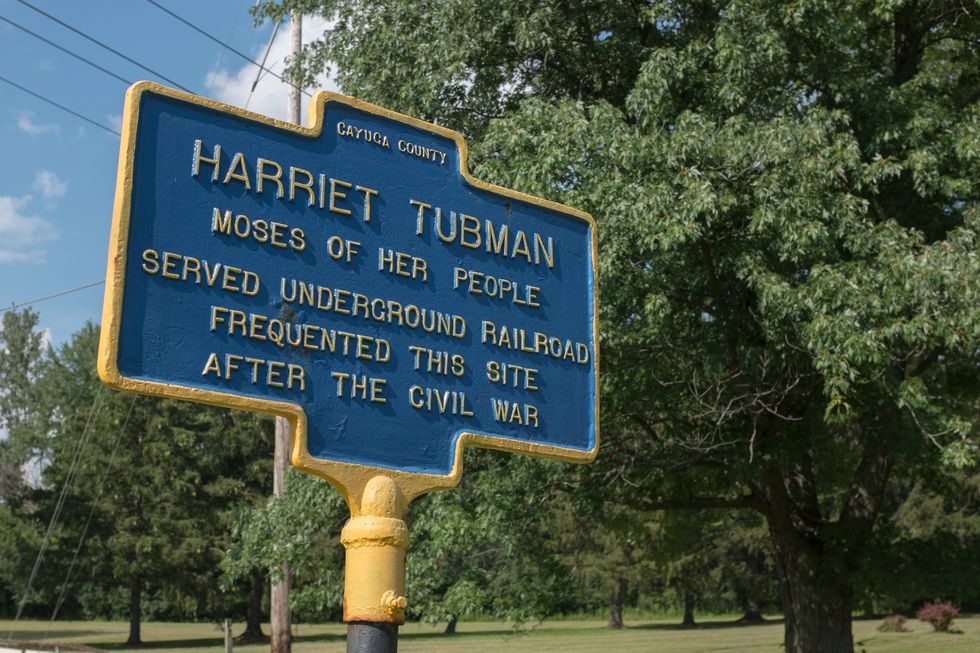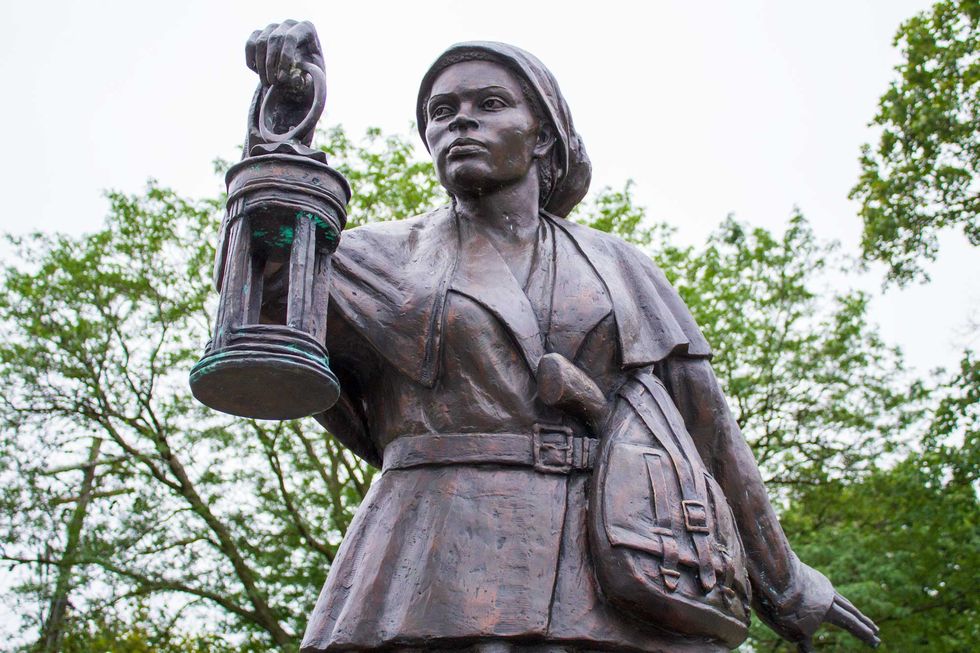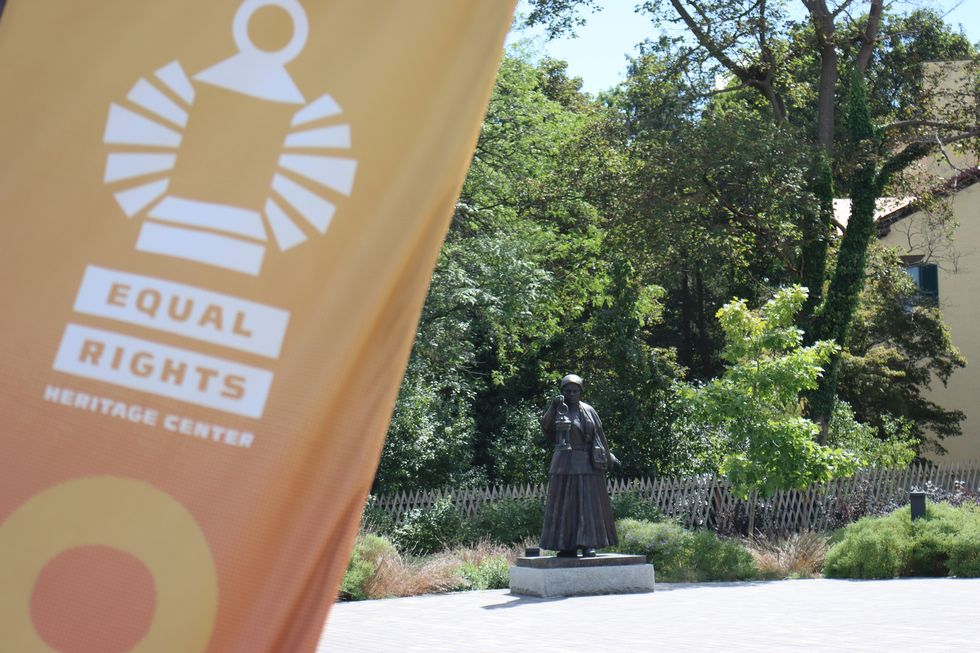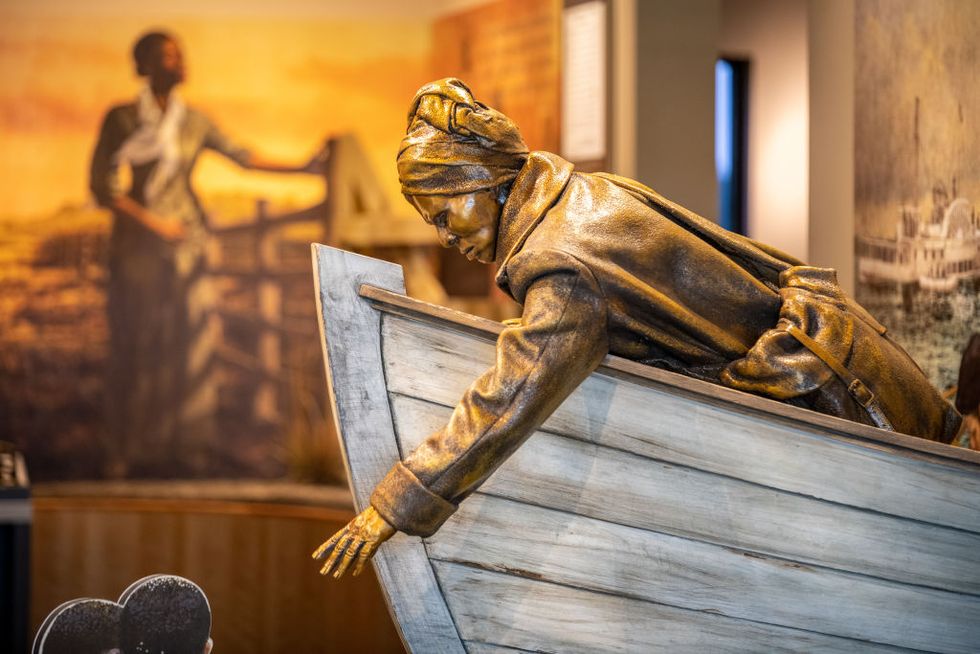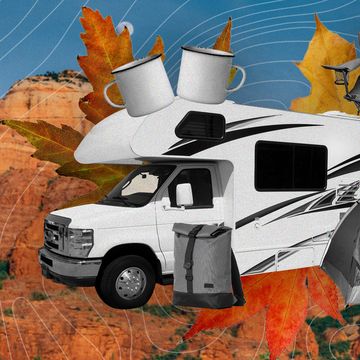Pressing my hands against the bricks of the home Harriet Tubman built, I closed my eyes and listened to the wind rustling between the leaves of the trees surrounding this place where she lived and worked as a free woman, awaiting a message from the Underground Railroad conductor and Union spy.
Little did I know when I visited Auburn, New York, last year that I was following a ritual that 130 of Tubman’s descendants did a month before when they made their own pilgrimage to 180 South Street from the likes of Florida, Texas, Washington state, and as far north as Canada to commemorate the bicentennial of Tubman’s birth.
Michele Jones Galvin, Tubman’s great-great-grandniece and co-author of Beyond the Underground: Aunt Harriet, Moses of Her People, attended the reunion from Syracuse, New York. She believes Tubman’s message reverberating throughout the generations has always been clear. “It was that we were to take care of one another and our neighbors to the best of our ability,” Jones Galvin says. “That, to me, was who Aunt Harriet was. She took care of her family to the best of her ability. She took care of her neighbors to the extent that she could.”
Jones Galvin describes her historic auntie as an “ordinary woman who did extraordinary things.” A woman who was friendly but introverted, empathetic, and compassionate. Not flamboyant. Never an attention-seeker. In Auburn, recognition of Tubman has been incrementally ramping up since the 1990s as citizen-led efforts from locals and transplants alike began making connections to and garnering an understanding of her significant involvement in the city.
“I felt when I came here that she was an overlooked individual,” acknowledges Bill Berry Jr., the immediate past chair of the Harriet Tubman Center for Justice & Peace. “There wasn’t any significant involvement by citizens here in Auburn to recognize someone who, by then, had come to international prominence. Here’s somebody whose life was exemplary [and] can show people what it really means to be courageous [and] have a sense of perseverance grounded in equity, social justice, and freedom.”
I arrived in Auburn during a two-day road trip with my best friend, Rochell. We were in Chittenango Falls State Park chasing waterfalls when we realized we were an hour away from Tubman’s chosen free home and decided to take a detour, arriving just in time to catch the last afternoon tour given by the National Park Service, which oversees the Harriet Tubman National Historic Park.
The 32-acre property is covered with trees and divided by a long gravel driveway. To the right is the modest two-story brick home where Tubman lived and worked as a businesswoman and midwife with her second husband, Nelson Davis, and other family members. On the opposite side lies the Harriet Tubman Home for the Aged (formerly known as the John Brown Home for the Aged and Indigent Colored People), which Tubman built for her parents and the infirmed. The drive ends at the Harriet Tubman Visitor’s Center. We happened to be there in time to see the evocative 9-foot traveling sculpture Harriet Tubman — The Journey to Freedom, which was unveiled last spring in the north apron of Philadelphia’s City Hall.
“The best place to experience Harriet Tubman is in Auburn, New York,” community leader Rhoda Overstreet-Wilson attests. “There’s a physicalness that is here. You can touch the banisters that she touched. You can walk the streets where she walked. To channel her essence, it can be done in no other way than in Auburn.”
Built in 1891, the Thompson Memorial African Methodist Episcopal Zion Church, where Tubman worshipped, is also part of the national park site in Auburn. (The Harriet Tubman Memorial A.M.E. Zion Church, located on 90 Franklin Street in Auburn, eventually replaced the old Thompson church and parsonage. It was named in honor of Tubman.) Currently, Thompson Memorial is being overhauled by the National Park Service and is expected to be available for tours later this summer or early fall.
Renovations on the Tubman residence are also planned and will proceed once the legal frameworks for grant funding and development between the A.M.E. Zion Church — to which the property was bequeathed — and the National Park Service are completed. Proceeds from the forthcoming Harriet Tubman commemorative coins ($5 gold coins, $1 silver coins, half-dollar copper-nickel coins) will be split between Tubman’s historic home in Auburn and the National Underground Railroad Freedom Center in Cincinnati. Jones Galvin says Tubman being added to the $20 bill, announced in 2016 by the Treasury Department, is at least seven years from actuality.
Without being able to enter her home or the church building, I was still moved to be on this sacred ground: laying hands on the bricks she manufactured and used to build her home; imagining myself greeting her at the steps to bring a gingerbread cake (which I learned she loved); or singing next to her in the pew where she worshiped (and wondering if she was an alto). Like others, I left mementos — citrine and tiger’s eye crystals I had with me — at her gravesite in reverence and appreciation.
“In discussing Harriet Tubman and what she was able to accomplish, there is also that overlying spirituality that she lived and breathed, and that’s definitely pulled through to today,” says Ahna Wilson, superintendent of the Women’s Rights National Historic Park and Harriet Tubman National Historic Park.
There are highlights of Tubman’s work in the suffragette movement at the Equal Rights Heritage Center. Next door at the Seward House, visitors can learn of her life and work with Secretary of State William H. Seward and his family.
Tubman’s legacy will be incorporated into Auburn’s free Black History Walk on February 18. For Harriet Tubman Day on March 10 — the day she died in 1913 — the city plans to commemorate the anniversary with several events. This year, there will be a talk from Clarence Lusane, the author of Twenty Dollars and Change: Harriet Tubman and the Ongoing Fight for Racial Justice and Democracy. Tubman’s legacy will also be part of events during Women’s History Month in March and a Juneteenth celebration scheduled for June 17.
While Auburn is a focal point for experiencing Tubman’s life as a groundbreaking free woman, her legacy can be felt throughout North America. As she famously said, “If you want a taste of freedom, keep going.” Here are other sites to experience the impact of Tubman.
- Atlanta: In February, the West Atlanta Watershed Alliance is sponsoring events in which attendees can connect with Tubman through interpretive hikes as well as a discussion with author Tricia Hersey, founder of the Nap Ministry.
- Cambridge, Maryland: Tubman was born in the early 1800s in Dorchester County, which is now home to the Harriet Tubman Museum and Educational Center. At the Bucktown General Store, visitors can experience Tubman’s first act of defiance.
- Church Creek, Maryland: The Harriet Tubman Underground Railroad State Park and Visitor Center is a prime location for exploring the Harriet Tubman Underground Railroad Byway, a self-guided driving tour that includes 36 sites related to Tubman and the Underground Railroad. Tubman is the only woman and African American with two national parks named in their honor.
- Cincinnati, Ohio: The National Underground Railroad Freedom Center, which opened in 2004, includes the permanent interactive exhibit “Escape! Freedom Seekers and the Underground Railroad,” which features Tubman.
- Newark, New Jersey: A new monument honoring Tubman designed by Nina Cooke John titled Shadow of a Face is scheduled to be unveiled March 9 in the city's recently renamed Tubman Square.
- Niagara Falls, Canada: Hop aboard Motherland Connextions' bus tour to see freedom crossing points and landmark locations in the Ontario area while listening to guides in period costumes share tales of Tubman’s work throughout the region.
- Philadelphia: A decade before the Civil War, Tubman called Philly home. The Kennett Underground Railroad Center offers tours of key sites in the Kennett area from the spring through fall.
- Washington, D.C.: The Harriet Tubman Collection, which includes a shawl gifted to Tubman by Queen Victoria, is on permanent display at the National Museum of African American History and Culture. There is also a wax figure of the freedom fighter in the Presidents Gallery at Madame Tussauds.
Janice Rhoshalle Littlejohn is a Southern California-based writer who has contributed to Ms. magazine and Medium.
Get Shondaland directly in your inbox: SUBSCRIBE TODAY


